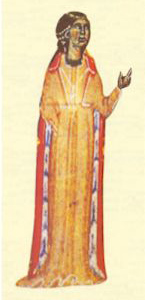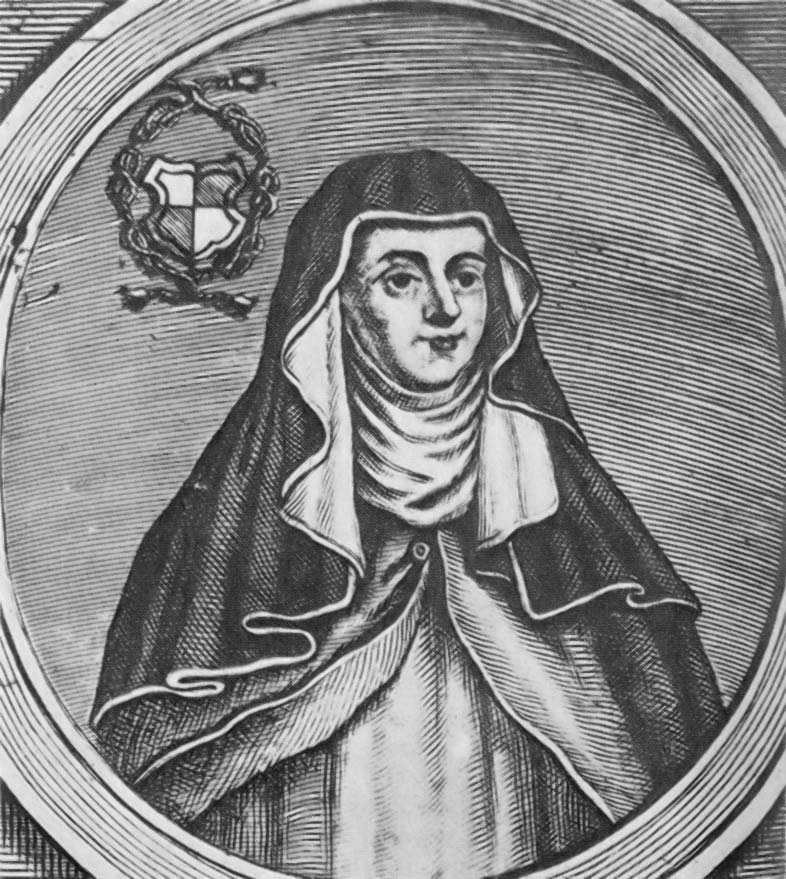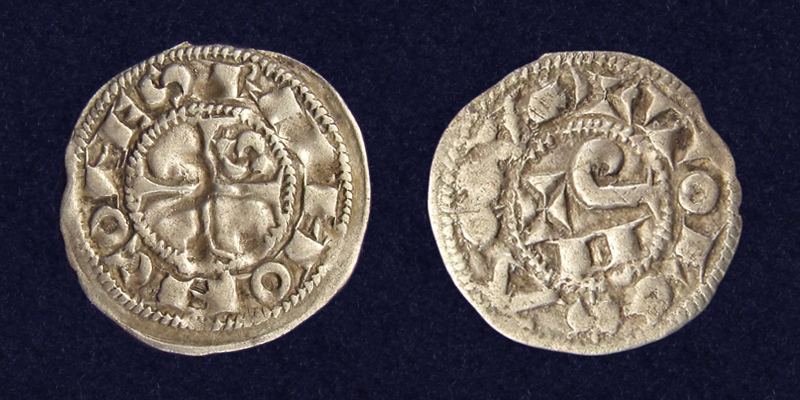|
Alamanda De Castelnau
Alamanda was a trobairitz whose only surviving work is a ''tenso'' with Giraut de Bornelh called '.Alamanda de Castelnau (1160–1223) ''S'ie us qier conseill, bella amia Alamanda'' Classical music online. In the past she was usually considered fictitious and the "''tenso''" was considered a piece of Giraut's writing. However, an Alamanda is mentioned by three other troubadours, including the trobairitz Lombarda, indicating that she was probably real and quite prominent in Occitan poetic circles. Her ''tenso'' with Giraut de Bornelh mirrors in form a '' canso'' by the Comtessa de Dia. The trobairitz is probably identical with the Alamanda de Castelnau or Castelnou who was born around 1160. She was probably poetically active only briefly while spending her youth at the court of Raymond V of Toulouse (reigned 1148-1194). She left his court to marry Guilhem de Castelnou and later became a canoness of Saint-Étienne at Toulouse, dying in 1223. Sources Sources *Bruckner, Matilda ... [...More Info...] [...Related Items...] OR: [Wikipedia] [Google] [Baidu] |
Trobairitz
The ''trobairitz'' () were Occitan female troubadours of the 12th and 13th centuries, active from around 1170 to approximately 1260. ''Trobairitz'' is both singular and plural. The word ''trobairitz'' is first attested in the 13th-century romance '' Flamenca''. It comes from the Provençal word ''trobar'', the literal meaning of which is "to find", and the technical meaning of which is "to compose". The word ''trobairitz'' is used very rarely in medieval Occitan, as it does not occur in lyrical poetry, grammatical treatises or in the biographies (''vidas'') of the ''trobairitz'' or troubadours.Paden It does occur in the treatise ''Doctrina d'acort'' by Terramagnino da Pisa, written between 1282 and 1296. He uses it as an example of a word the plural and singular of which are the same.Elizabeth W. Poe, "Cantairitz e Trobairitz: A Forgotten Attestation of Old Provençal »Trobairitz«," ''Romanische Forschungen'', 114, 2 (2002), pp. 206–215, at 207: "which are correctly use ... [...More Info...] [...Related Items...] OR: [Wikipedia] [Google] [Baidu] |
Canoness
Canoness is a member of a religious community of women living a simple life. Many communities observe the monastic Rule of St. Augustine. The name corresponds to the male equivalent, a canon. The origin and Rule are common to both. As with the canons, there are two types: canonesses regular, who follow the Augustinian Rule, and secular canonesses, who follow no monastic Rule of Life. Background The involvement of women in the work of the Church goes back to the earliest time, and their uniting together for community exercises was a natural development of religious worship. Many religious orders and congregations of men have related convents of nuns, following the same rules and constitutions, many communities of canonesses taking the name and rule of life laid down for the congregations of regular canons. History Saint Basil the Great in his rules addresses both men and women. Augustine of Hippo drew up the first general rule for such communities of women. It was written in th ... [...More Info...] [...Related Items...] OR: [Wikipedia] [Google] [Baidu] |
12th-century French Troubadours
1 (one, unit, unity) is a number representing a single or the only entity. 1 is also a numerical digit and represents a single unit of counting or measurement. For example, a line segment of ''unit length'' is a line segment of length 1. In conventions of sign where zero is considered neither positive nor negative, 1 is the first and smallest positive integer. It is also sometimes considered the first of the infinite sequence of natural numbers, followed by 2, although by other definitions 1 is the second natural number, following 0. The fundamental mathematical property of 1 is to be a multiplicative identity, meaning that any number multiplied by 1 equals the same number. Most if not all properties of 1 can be deduced from this. In advanced mathematics, a multiplicative identity is often denoted 1, even if it is not a number. 1 is by convention not considered a prime number; this was not universally accepted until the mid-20th century. Additionally, 1 is the s ... [...More Info...] [...Related Items...] OR: [Wikipedia] [Google] [Baidu] |
Year Of Birth Uncertain
A year or annus is the orbital period of a planetary body, for example, the Earth, moving in its orbit around the Sun. Due to the Earth's axial tilt, the course of a year sees the passing of the seasons, marked by change in weather, the hours of daylight, and, consequently, vegetation and soil fertility. In temperate and subpolar regions around the planet, four seasons are generally recognized: spring, summer, autumn and winter. In tropical and subtropical regions, several geographical sectors do not present defined seasons; but in the seasonal tropics, the annual wet and dry seasons are recognized and tracked. A calendar year is an approximation of the number of days of the Earth's orbital period, as counted in a given calendar. The Gregorian calendar, or modern calendar, presents its calendar year to be either a common year of 365 days or a leap year of 366 days, as do the Julian calendars. For the Gregorian calendar, the average length of the calendar y ... [...More Info...] [...Related Items...] OR: [Wikipedia] [Google] [Baidu] |
Trobairitz
The ''trobairitz'' () were Occitan female troubadours of the 12th and 13th centuries, active from around 1170 to approximately 1260. ''Trobairitz'' is both singular and plural. The word ''trobairitz'' is first attested in the 13th-century romance '' Flamenca''. It comes from the Provençal word ''trobar'', the literal meaning of which is "to find", and the technical meaning of which is "to compose". The word ''trobairitz'' is used very rarely in medieval Occitan, as it does not occur in lyrical poetry, grammatical treatises or in the biographies (''vidas'') of the ''trobairitz'' or troubadours.Paden It does occur in the treatise ''Doctrina d'acort'' by Terramagnino da Pisa, written between 1282 and 1296. He uses it as an example of a word the plural and singular of which are the same.Elizabeth W. Poe, "Cantairitz e Trobairitz: A Forgotten Attestation of Old Provençal »Trobairitz«," ''Romanische Forschungen'', 114, 2 (2002), pp. 206–215, at 207: "which are correctly use ... [...More Info...] [...Related Items...] OR: [Wikipedia] [Google] [Baidu] |
1223 Deaths
1 (one, unit, unity) is a number representing a single or the only entity. 1 is also a numerical digit and represents a single unit (measurement), unit of counting or measurement. For example, a line segment of ''unit length'' is a line segment of length 1. In conventions of sign where zero is considered neither positive nor negative, 1 is the first and smallest Positive number, positive integer. It is also sometimes considered the first of the sequence (mathematics), infinite sequence of natural numbers, followed by 2, although by other definitions 1 is the second natural number, following 0. The fundamental mathematical property of 1 is to be a multiplicative identity, meaning that any number multiplied by 1 equals the same number. Most if not all properties of 1 can be deduced from this. In advanced mathematics, a multiplicative identity is often denoted 1, even if it is not a number. 1 is by convention not considered a prime number; this was not universally ac ... [...More Info...] [...Related Items...] OR: [Wikipedia] [Google] [Baidu] |
1160s Births , synthetic chemical element with atomic number 116
{{Numberdis ...
116 (''one hundred and sixteen'') may refer to: *116 (number) *AD 116 *116 BC *116 (Devon and Cornwall) Engineer Regiment, Royal Engineers, a military unit *116 (MBTA bus) *116 (New Jersey bus) *116 (hip hop group), a Christian hip hop collective *116 emergency number, see List of emergency telephone numbers ** 116 emergency telephone number in California *116 helplines in Europe *Route 116, see list of highways numbered 116 See also *11/6 (other) * *Livermorium Livermorium is a synthetic chemical element with the symbol Lv and has an atomic number of 116. It is an extremely radioactive element that has only been created in a laboratory setting and has not been observed in nature. The element is named afte ... [...More Info...] [...Related Items...] OR: [Wikipedia] [Google] [Baidu] |
Internet Archive
The Internet Archive is an American digital library with the stated mission of "universal access to all knowledge". It provides free public access to collections of digitized materials, including websites, software applications/games, music, movies/videos, moving images, and millions of books. In addition to its archiving function, the Archive is an activist organization, advocating a free and open Internet. , the Internet Archive holds over 35 million books and texts, 8.5 million movies, videos and TV shows, 894 thousand software programs, 14 million audio files, 4.4 million images, 2.4 million TV clips, 241 thousand concerts, and over 734 billion web pages in the Wayback Machine. The Internet Archive allows the public to upload and download digital material to its data cluster, but the bulk of its data is collected automatically by its web crawlers, which work to preserve as much of the public web as possible. Its web archiving, web archive, the Wayback Machine, contains hu ... [...More Info...] [...Related Items...] OR: [Wikipedia] [Google] [Baidu] |
Toulouse
Toulouse ( , ; oc, Tolosa ) is the prefecture of the French department of Haute-Garonne and of the larger region of Occitania. The city is on the banks of the River Garonne, from the Mediterranean Sea, from the Atlantic Ocean and from Paris. It is the fourth-largest city in France after Paris, Marseille and Lyon, with 493,465 inhabitants within its municipal boundaries (2019 census); its metropolitan area has a population of 1,454,158 inhabitants (2019 census). Toulouse is the central city of one of the 20 French Métropoles, with one of the three strongest demographic growth (2013-2019). Toulouse is the centre of the European aerospace industry, with the headquarters of Airbus, the SPOT satellite system, ATR and the Aerospace Valley. It hosts the CNES's Toulouse Space Centre (CST) which is the largest national space centre in Europe, but also, on the military side, the newly created NATO space centre of excellence and the French Space Command and Space Academy. T ... [...More Info...] [...Related Items...] OR: [Wikipedia] [Google] [Baidu] |
Tenso
A ''tenso'' (; french: tençon) is a style of troubadour song. It takes the form of a debate in which each voice defends a position; common topics relate to love or ethics. Usually, the tenso is written by two different poets, but several examples exist in which one of the parties is imaginary, including God ( Peire de Vic), the poet's horse ( Gui de Cavalhon) or his cloak (Bertran Carbonel). Closely related, and sometimes overlapping, genres include: * the ''partimen'', in which more than two voices discuss a subject * the ''cobla esparsa'' or ''cobla exchange'', a tenso of two stanzas only * the ''contenson'', where the matter is eventually judged by a third party. Notable examples * Marcabru and Uc Catola''Amics Marchabrun, car digam'' possibly the earliest known example. * Cercamon and Guilhalmi''Car vei finir a tot dia'' another candidate for the earliest known example. * Raimbaut d'Aurenga and Giraut de Bornelh''Ara·m platz, Giraut de Borneill'' where major exponents of th ... [...More Info...] [...Related Items...] OR: [Wikipedia] [Google] [Baidu] |
Raymond V Of Toulouse
Raymond V ( oc, Ramon; c. 1134 – c. 1194) was Count of Toulouse from 1148 until his death in 1194. He was the son of Alphonse I of Toulouse and Faydida of Provence. Alphonse took his son with him on the Second Crusade in 1147. When Alphonse died in Caesarea in 1148, the county of Toulouse passed to his son Raymond, then aged 14. The young count was honoured by Rorgo Fretellus, archdeacon of Nazareth, who dedicated a new edition of his ''Description of the Holy Places'' to him. As count, Raymond permitted the first assembly of townsmen in Toulouse, the origin of the later capitouls. In 1165, in the town of Lombers, the Bishop of Albi, attended by both clerics and members of the nobility, including Constance, the wife of Raymond V, interrogated and debated with members of an alleged heretical sect. Calling themselves "Good Men", this group held beliefs similar to those of Henry of Lausanne and Peter of Bruys as well as indicating Cathar influence. While the Good Men d ... [...More Info...] [...Related Items...] OR: [Wikipedia] [Google] [Baidu] |






